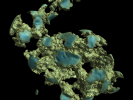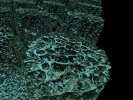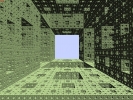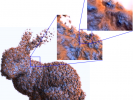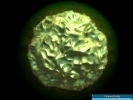Interactive GigaVoxels
Cyril Crassin; Fabrice Neyret; Sylvain Lefebvre(techreport)
Abstract
We propose a new approach for the interactive rendering of large highly detailed scenes. It is based on a new representation and algorithm for large and detailed volume data, especially well suited to cases where detail is concentrated at the interface between free space and clusters of density. This is for instance the case with cloudy sky, landscape, as well as data currently represented as hypertextures or volumetric textures. Existing approaches do not efficiently store, manage and render such data, especially at high resolution and over large extents.
Our method is based on a dynamic generalized octree with MIP-mapped 3D texture bricks in its leaves. Data is stored only for visible regions at the current viewpoint, at the appropriate resolution. Since our target scenes contain many sparse opaque clusters, this maintains low memory and bandwidth consumption during exploration. Ray-marching allows to quickly stops when reaching opaque regions. Also, we efficiently skip areas of constant density. A key originality of our algorithm is that it directly relies on the ray-marcher to detect missing data. The march along every ray in every pixel may be interrupted while data is generated or loaded. It hence achieves interactive performance on very large volume data sets. Both our data structure and algorithm are well-fitted to modern GPUs.
BibTex references
author = {Crassin, Cyril and Neyret, Fabrice and Lefebvre, Sylvain},
title = {Interactive GigaVoxels},
url = {http://maverick.inria.fr/Publications/2008/CNL08, INRIA Webpage},
year = {2008},
date = {2008-01-01},
institution = {INRIA Technical Report},
}
